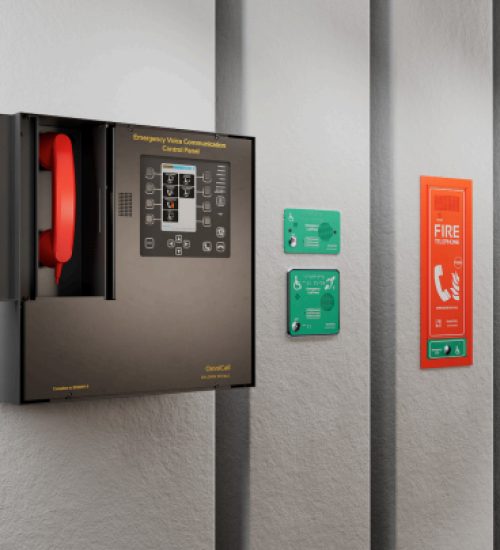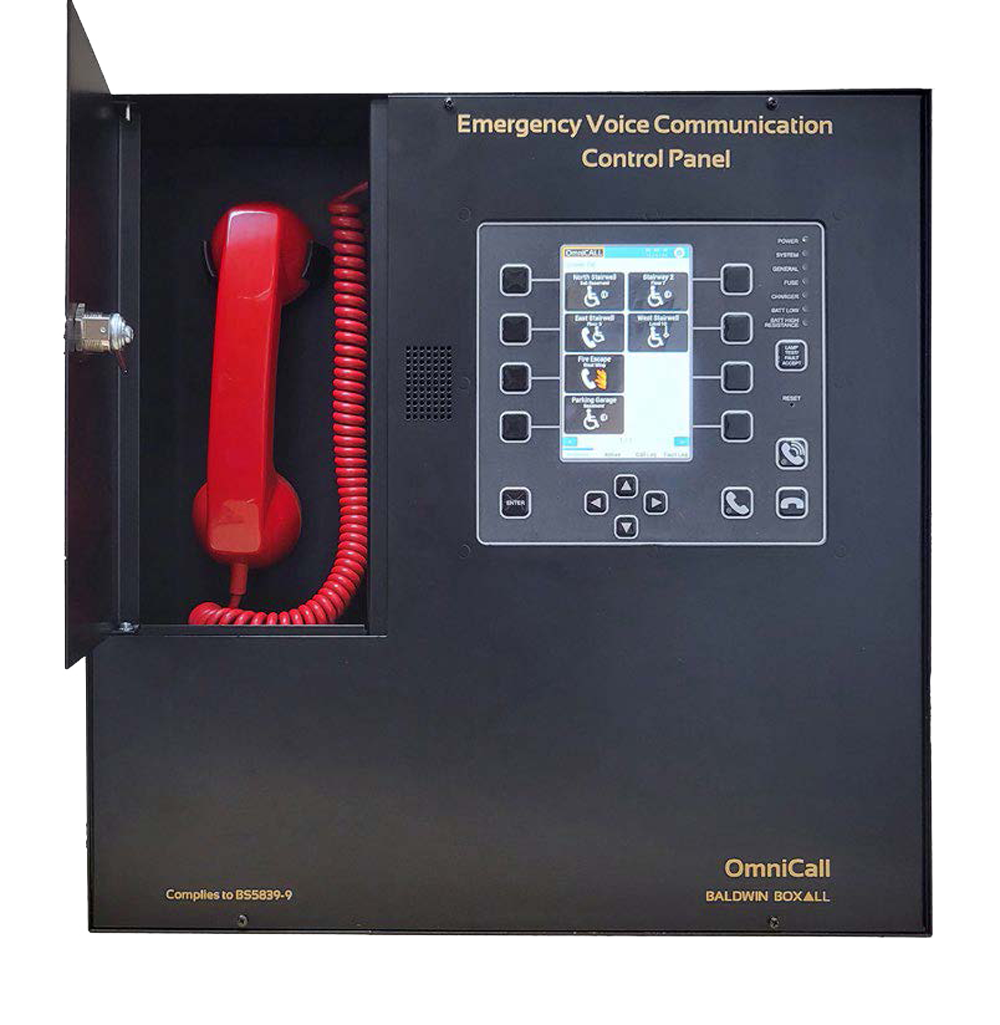OmniCALL EVC System
REDEFINING EMERGENCY VOICE COMMUNICATION
The next generation of Emergency Voice Communication technology, featuring the option to wire both radial and loop remotes on one system.
Non-polarity dependent 2 core wiring allows for ease of installation and retro-fit options, using existing cabling, saving on time and cost.
At Baldwin Boxall, we deliver the next generation of Emergency Voice Communication (EVC) with OmniCALL – the most flexible and energy-efficient solution for when it matters most.
Designed for seamless integration, installation, and maintenance, OmniCALL combines cutting-edge loop and radial technology in one system – OMNICALL an industry-first that adapts to your unique needs.

Comprehensive EVC Solutions
OmniCALL offers a wide range of outstations with the flexibility to expand and develop systems as and when required.

Fire Telephone Outstation Type A

Standard Refuge Outstation Type B

Advanced Refuge Outstation Type B

Combined Fire Telephone and Refuge Outstation Type C
Key Differences Between Commercial and Residential EVCS
Unlike in commercial buildings, where trained staff manage EVCS systems, residential systems are primarily for use by Fire and Rescue Services during emergencies. Therefore, residential installations demand specific adaptations:
Master Control Panel Locations:
- Commercial: Typically, in staffed control, security or FCC (Fire Command Centre) rooms
- Residential: Where there isn’t a dedicated staffed area, typically near the fire service access point, in a location safely accessible during evacuation (BS5839-9 Clause 12.6c).
Optional Features for Residential Use:
To optimise EVCS for residential settings where there is not always someone available at all times to answer calls, Baldwin Boxall recommends:
- Optional System Controls :
Disable the system to prevent misuse until activated by the Fire & Rescue Services.
Use triggers like a connection to evacuation alert systems (BS8629) or a “break glass” enable switch. - Secure Operation:
Keys or activation equipment in “break glass” enclosures labelled for emergency use. - User Guidance:
Clear signage at the master station with step-by-step instructions. - Outstation Labelling:
Clearly mark outstations with Emergency Use Only or similar
Safe & Compliant

Ready for BS8893:2024 compliance – BS8893- 2024 is the new standard which states component requirements for an Emergency Voice Communication (EVC) system.

BS5839-9 is a code of practice for those who install, maintain and commission EVC systems, giving guidance on how to install an effective system as part of a fire detection and alarm system covering all components including wireless.

BS9999 is a BSI Standards Publication providing guidance for fire safety in the design, management and use of buildings. It includes the provision of evacuation methods and placement of EVC systems.
Documentation & Downloads
| Downloads | Link |
|---|
| Downloads | Link |
|---|
| Downloads | Link |
|---|
| Downloads | Link |
|---|
| Downloads | Link |
|---|
Looking for something in particular?
Search our full database of downloads and documentation

